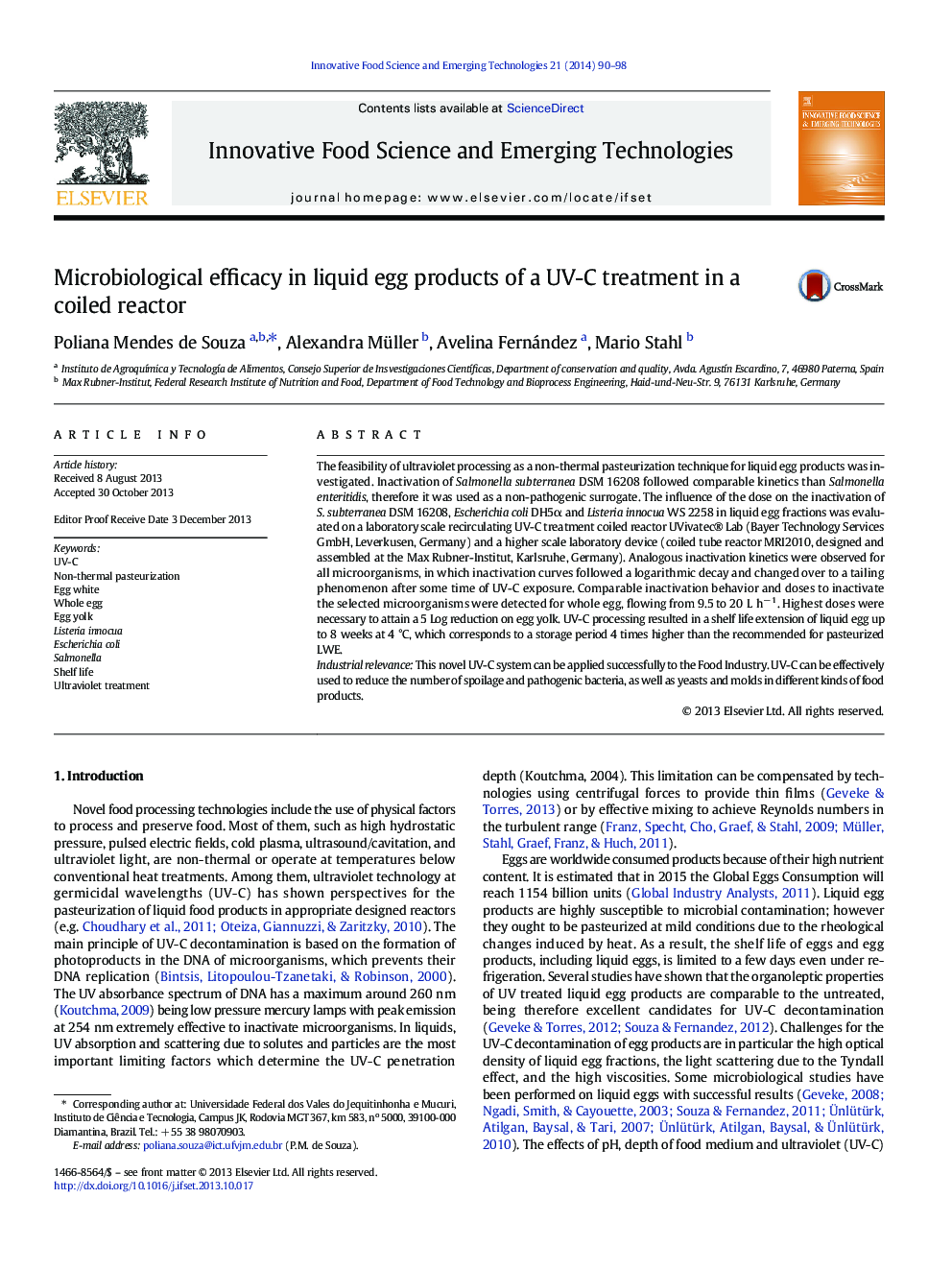| Article ID | Journal | Published Year | Pages | File Type |
|---|---|---|---|---|
| 2086759 | Innovative Food Science & Emerging Technologies | 2014 | 9 Pages |
•Satisfactory microbiological inactivation method•Longer shelf life was attained with ultraviolet processing compared to thermal process.•Extensive microbiological studies•All egg fractions were studied.
The feasibility of ultraviolet processing as a non-thermal pasteurization technique for liquid egg products was investigated. Inactivation of Salmonella subterranea DSM 16208 followed comparable kinetics than Salmonella enteritidis, therefore it was used as a non-pathogenic surrogate. The influence of the dose on the inactivation of S. subterranea DSM 16208, Escherichia coli DH5α and Listeria innocua WS 2258 in liquid egg fractions was evaluated on a laboratory scale recirculating UV-C treatment coiled reactor UVivatec® Lab (Bayer Technology Services GmbH, Leverkusen, Germany) and a higher scale laboratory device (coiled tube reactor MRI2010, designed and assembled at the Max Rubner-Institut, Karlsruhe, Germany). Analogous inactivation kinetics were observed for all microorganisms, in which inactivation curves followed a logarithmic decay and changed over to a tailing phenomenon after some time of UV-C exposure. Comparable inactivation behavior and doses to inactivate the selected microorganisms were detected for whole egg, flowing from 9.5 to 20 L h− 1. Highest doses were necessary to attain a 5 Log reduction on egg yolk. UV-C processing resulted in a shelf life extension of liquid egg up to 8 weeks at 4 °C, which corresponds to a storage period 4 times higher than the recommended for pasteurized LWE.Industrial relevanceThis novel UV-C system can be applied successfully to the Food Industry. UV-C can be effectively used to reduce the number of spoilage and pathogenic bacteria, as well as yeasts and molds in different kinds of food products.
